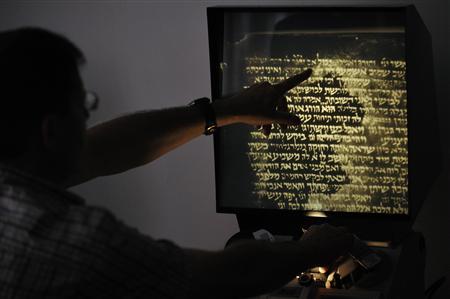 Finally, historians need not to play any guessing game anymore. Well, researchers in Israel have claimed that they have developed a computer algorithm that is able to decipher cacographic ancient texts and may even become the next Google-like search engine for historical documents. According to a report by Reuters, “the program uses a pattern recognition algorithm similar to those law enforcement agencies have adopted to identify and compare fingerprints.”
Finally, historians need not to play any guessing game anymore. Well, researchers in Israel have claimed that they have developed a computer algorithm that is able to decipher cacographic ancient texts and may even become the next Google-like search engine for historical documents. According to a report by Reuters, “the program uses a pattern recognition algorithm similar to those law enforcement agencies have adopted to identify and compare fingerprints.”
Surprisingly, the clever system is able to identify letters, words and even handwriting styles. It’s definitely a more efficient and faster way in deciphering complicated text as compared to the traditional way of historians and liturgists sitting on a couch, with a magnifying glass in one of their hands, squinting their eyes to figure out what’s on the manuscript. That would have taken them hours or probably even days but with the new computer algorithm, the duration of researching could be just a few minutes.
By recognizing such patterns, the computer can recreate with high accuracy portions of texts that faded over time or even those written over by later scribes, said Itay Bar-Yosef, one of the researchers from Ben-Gurion University of the Negev. “The more texts the program analyzes, the smarter and more accurate it gets,” Bar-Yosef said.
The computer even offers one really cool and impressive feature. Besides having the ability to analyze handwriting and writing styles, it can even “fill in the blanks” of smeared or faded characters that are otherwise indiscernible. This is indeed amazing!
It’s still currently in further development and the folks there have planned a program for all academics in two years. It is said that the program can drive an engine to search instantaneously any digital database of handwritten documents. “When enough texts have been digitized, it will manage to combine fragments of books that have been scattered all over the world,” Ehrlich said.